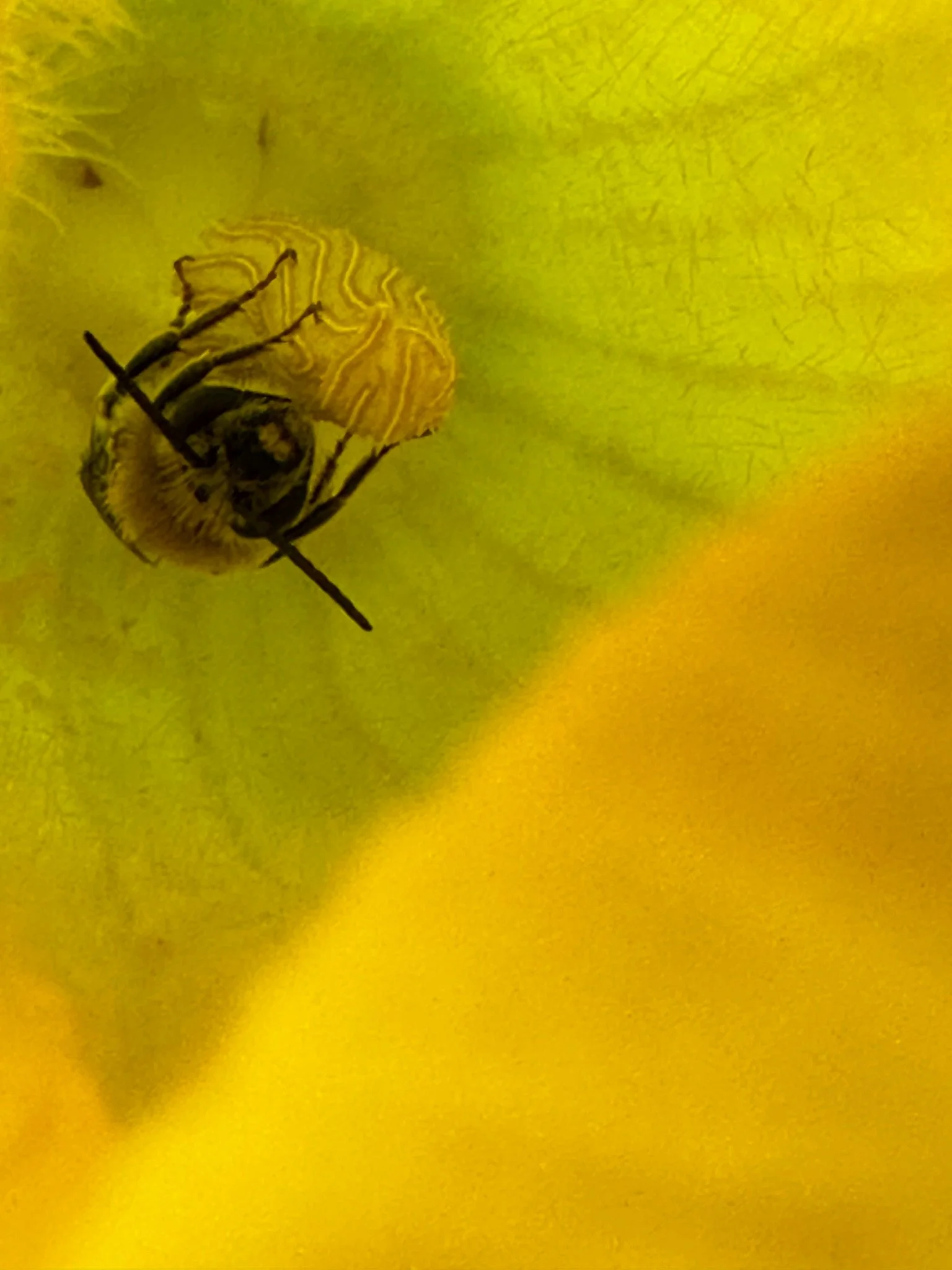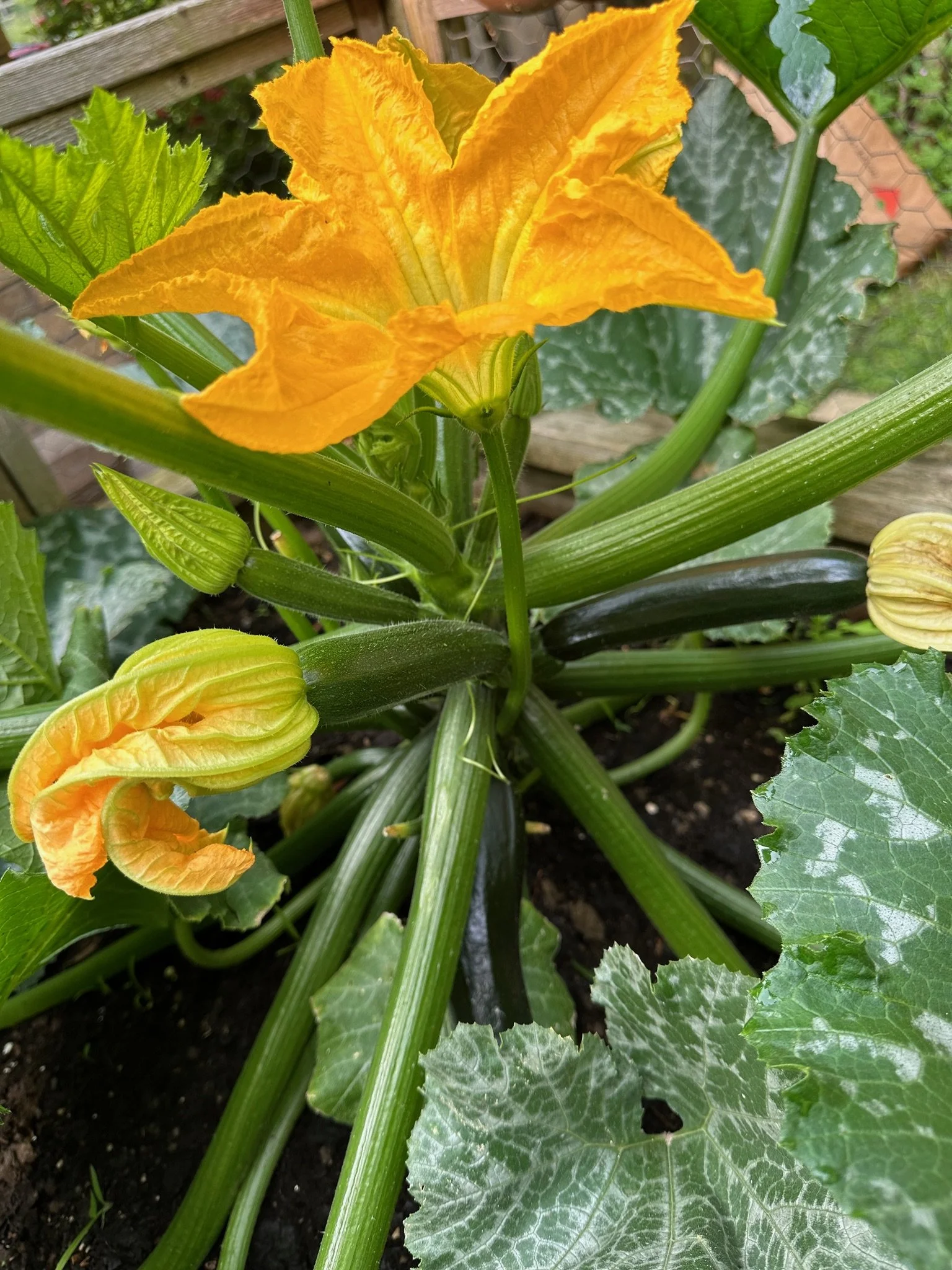Squash Bee
The Squash Bee (Peponapis pruinosa) is a welcome addition to any garden. If you plan on growing zucchini, pumpkins, or any other squash (Cucurbita) plants, it’s time to get acquainted with this special pollinator!
These little bees are native to Canada in Ontario and Quebec, and much of the United States. They can be found almost anywhere that squash plants grow naturally. As specialist pollinators, squash bees exclusively rely on squash plants for food (did their name give it away?). Since their food source is from squash plants it only makes sense that they make themselves at home where squash plants grow. They are solitary ground nesters and require undisturbed soil to make a safe home for themselves.
If you grow squash plants in your garden you can thank these busy bees for all their hard work pollinating your plants and giving you plenty of fruit. Squash plants depend on pollinators to set fruit, and studies reveal that squash bees out-perform non-native honeybees when it comes to pollinating squash crops.
Squash bees have a unique work schedule compared to many other pollinators. These early risers begin working just before sunrise, equipped with large eyes that allow them to navigate in low-light conditions. Squash plants and squash bees have evolved together, squash flowers open at night, attracting the bees that are active in the early morning hours before the sun reaches its peak. By midday, when the sunlight is strongest and the weather is hot, squash flowers close up. If you’re lucky, you might spot a squash bee taking a cozy nap inside one of the closed flowers.
As native pollinators, squash bees play a vital role in your garden’s success. By creating an environment where they can thrive, you’ll also help your plants flourish.
Leave undisturbed soil around your squash plants for nesting.
Grow squash annually to provide a consistent food source.
Keep a shallow water source nearby.
Avoid using pesticides and herbicides, as these chemicals can harm squash bees.
Squash bees spend the majority of their life cycle as pre-pupae in underground nests. Each nest built by a female bee contains around 4-5 cells full of pollen and nectar for each larvae. Their life cycle is in sync with the flowers of the squash plants, the adult bees are only active during the months that the plants are in bloom (late June through August). Throughout the growing season they collect enough pollen and nectar for their offspring to survive. As the squash flowers fade away at the end of summer, you can no longer find the squash bee. They will over-winter in their nests as pre-pupae emerging as adults in June or July, depending on the region.
Now that you’ve learned about these special bees, you can appreciate their contributions every time you harvest a zucchini or carve a pumpkin.




